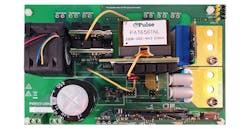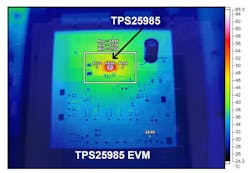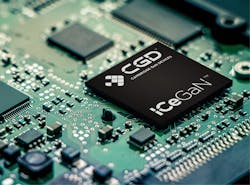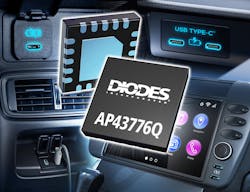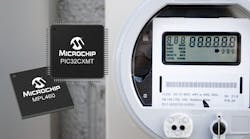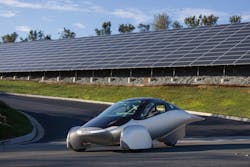This Week in PowerBites: Automotive Advances, Geek Gifts, and Free Tutorials
This article is part of the This Week in PowerBites Library Series.
Happy Holidays: Free Tutorials Address Emerging Topics in Advanced Power Design
Texas Instruments is offering a series of practical tutorials intended to help designers address the growing need for higher performance and power density in consumer, automotive, and other applications. After all of the presents are open and the cookies are gone, you can settle down with a mug of eggnog to do a bit of skills sharpening before you return from your holiday break.
"Understanding the Trade-offs and Technologies to Increase Power Density" examines the limitations to increasing power density and provides technology examples that can help designers overcome these barriers. Topics covered include modeling of losses due to switching, turn-on/turn-off, and charge-related effects, thermal performance limitations, and how to overcome them.
In the tutorial "Managing thermals: 3 ways to break through power-density barriers,” you'll gain a better understanding of the latest technologies, tradeoffs, and design techniques being used to develop high-density power solutions for hyperscale data centers, electric vehicles, and other residential and commercial applications.
"How a fully-stackable eFuse can help meet ever-increasing power needs of servers" focuses on the role that advanced fuse technologies can play in improving the efficiency and footprint of ever-more power-hungry computing equipment.
More information about these presentations (speakers, media deck, etc.) can be accessed by clicking here. For additional topics, visit www.ti.com/powerdensity.
Holiday Bonus: Wacky DIY Project Kits Develop Creativity and Problem Solving Skills
I dare you to watch CrunchLabs' video about its Build Box project kits and not crack a smile. Although I haven't laid hands on a Build Box (yet), I'm pretty sure it will be a hit with both nerds and non-nerds alike.
Click here to read our full review.
Cool-Running SiC Power Modules Boost EV Performance and Driving Range
STMicroelectronics has released a new series of SiC-MOSFET based power modules that can offer improved performance and driving range for electric vehicles. The five modules cover a broad range of power ratings and operating voltages commonly used in electric-vehicle (EV) traction applications. These advantages led Hyundai to select them for use in its current-generation EV platform, called E-GMP, which is also used by Kia for its EV6 and several other models.
The SiC power modules are based on ST's Gen3 STPOWER SiC MOSFETs, which combine an industry-leading figure of merit (RDS(ON) × die area) with very low switching energy and high efficiency when used in synchronous-rectification applications.
They enable a plug-and-play solution for traction inverters, compatible with direct liquid cooling, and feature a pin-fin array for efficient heat dissipation. Specified up to a maximum junction temperature of 175°C, they provide long-lasting and reliable press-fit connections and dice sintered to a substrate to ensure extended lifetime in automotive applications. ST will extend the product portfolio to include IGBT and diode-based ACEPACK DRIVE versions.
The modules feature active-metal-brazed (AMB) substrate technology, known for excellent thermal efficiency and mechanical strength, mounting a dedicated NTC for each substrate. They’re also available with a choice of welded or screw-fit busbar, giving flexibility to address different mounting requirements. A long-busbar option further extends the flexibility by allowing the choice of a Hall sensor to monitor the motor current.
ST’s 1200-V ADP280120W3, ADP360120W3, and ADP480120W3(-L) are already in full production. The remaining members of the ACEPACK DRIVE module series (750V ACEPACK DRIVE ADP46075W3 and ADP61075W3) will be in full production by March 2023. Contact your local ST sales representative for pricing and sample requests.
Integrated GaN HEMTs “Drive Like Silicon”
Cambridge GaN Devices (CGD) has announced that its IceGaN series of smart HEMT, monolithically integrated power solutions are now available for volume shipment. This includes its family of rugged, scalable 650-V GaN HEMT devices. Their silicon-like drive characteristics and numerous on-chip features make it easy to enjoy the higher efficiencies of GaN technology and reduced BOM counts in nearly any application based on low-side or half-bridge topologies.
Unlike discrete or hybrid solutions, CGD’s IceGaN HEMTs are fully integrated, GaN-only devices that offer several key advantages. First, they’re stable, reliable, and simple to drive, using an internal GaN interface attached to the gate. The devices also have a high VTH (roughly 3 V), which greatly reduces the risk of damage at turn-on, and are available in an extended voltage range of up to 20 V.
In addition, they feature integrated current sensing, a Miller clamp for safe turn-off and gate protection, and on-chip ESD protection. Finally, the devices don't require a negative voltage source, which avoids potential problems of dynamic RDS(on) degradation over time.
Available now in production-order quantities and through distribution, CGD’s ICeGaN HEMTs possess a unique set of intrinsic capabilities that elevate device reliability well above current state-of-the-art GaN competition. This is due to the higher voltage threshold and higher voltage range, stronger gate voltage clamping action at lower temperatures, high gate overvoltage margin, and higher dV/dt and dI/dt immunity. Less exposure to dynamic RON stress, dc voltage flexibility (9-20 V), and a high-efficiency current sense also contribute to industry-leading device ruggedness.
Automotive-Grade Multi-Protocol Decoder Supports USB PD 3.1 SPR, PPS, and QC Charging Apps
A highly integrated dual-channel USB Type-C protocol decoder developed by Diodes Inc. is aimed at pre-installed in-vehicle USB charging applications. The AP43776Q supports USB power delivery (PD) 3.1 standard power range (SPR) and programmable power supply (PPS), as well as Quick Charge (QC5) fast-charging protocols. It also supports legacy battery charging (BC) 1.2 and is highly optimized for multi-port automotive USB device charging systems.
The AP43776Q features a built-in microcontroller unit (MCU) with 12 kB of one-time programmable (OTP) ROM, plus a multi-time programmable (MTP) ROM resource tool. Each PD 3.1 port is fully PPS compliant, featuring a 3.3- to 21-V output voltage range with 20- and 50-mA/step adjustment. They enable independent charging output voltages for greater power usage optimization.
An I2C interface enables inter-chip communication with dc-dc controllers and converters in the charging system. This simplifies the control loop and lowers overall component costs. Using the UART interface, two separate AP43776Q devices can be interconnected. As a result, smart power-sharing may be conducted across all four of their combined USB ports.
Besides managing power negotiation attachment procedures, the AP43776Q enables DisplayPort over USB-C by detecting USB Type-C Alternate Mode and driving a suitable USB/DP multiplexer. This facilitates the carrying of video data over the system’s USB connection.
The AP43776Q is AEC-Q100 Grade 1 qualified, manufactured in IATF 16949 certified facilities, and PPAP-capable. Available in a 20-pin W-QFN4040 wettable flank package format (with a 4- × 4-mm footprint), it’s priced at $1.18 in 1,000-piece quantities.
Smart-Metering Platform Integrates 32-bit Arm MCU and MPL460 PLC Modem
Microchip Technology announced the PIC32CXMT family of 32-bit microprocessors with a new MPL460 power-line communication (PLC) modem. The new suite of MCU devices is a next-generation smart-metering platform targeting industrial IoT as well as commercial and industrial metering applications that need to support rich feature sets and multiple communications standards.
The platform boasts increased performance with up to 200-MHz operation and broad scalability with up to 560 kB of memory (SRAM). All members of the PIC32CXMT MCU family are available with standard and proprietary on-chip hardware security features.
To allow developers to scale their products to any application, the PIC32CXMT family is offered in three variants, based either on a single Arm Cortex-M4F core, a dual Arm Cortex-M4 core, or a system-on-chip (SoC) device.
The MPL460 PLC modem also integrates a class D line driver that lowers the bill of materials and maintains 40+% signal injection efficiency across its full operating range. The PLC modem helps to increase efficiency and reliability based on power delivered to the load and power taken from the supply, reducing consumption from the source during transmission.
The platform is available with several transceiver solutions, including a radio/PHY, a PLC/PHY, or the option to select a PLC+RF hybrid solution. There also is an option for a metrology and communications software suite that is compliant with the American National Standards Institute (ANSI) and International Electrotechnical Commission (IEC) metering standards up to class 0.2 percent accuracy. It also supports standards for wired and wireless communications, such as G3-PLC and PRIME.
The PIC32CXMT family and MPL460 modem, which are sampling now on a limited basis, are supported by Microchip’s MPLAB Harmony v3 embedded software framework. Other resources include IAR Systems, Arm, Keil Development Environment, G3-PLC, and PRIME software.
Take the Latest ED Reader Poll: When (If Ever) Would You Consider Buying an EV?
Although EVs are still in their infancy, 2022 has seen so many improvements in practicality, price, and sheer cool factor that (supply chain permitting) 2023 may be the year I trade in my trusty 2009 hybrid Prius for a plug-in or all-electric ride. But have EVs become good enough to stand a chance at winning the hearts, minds, and wallets of Electronic Design's savvy community of tech professionals?
To answer this question, I've created a short reader poll where you can register your level of interest (or disinterest) in EVs and PHEVs, and which one you'd most like to find under your Chanukwanzamas* tree this holiday season.
Whether you're an EV fan, an electric skeptic, or a committed carbon-centric driver, you can help us shed some light on the state of the market for electric transportation.
Click here to answer our quick 3-question reader poll.
* Since I'm blessed to be part of a very diverse family, we celebrate Chanukwanzamas, a blend of Christmas, Chanukah, and Kwanza.
This article is part of the This Week in PowerBites Library Series.


